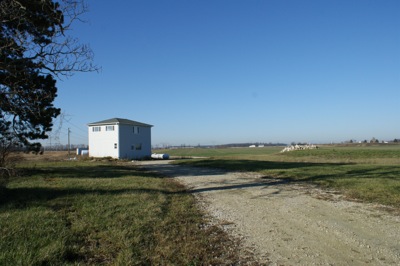Thursday, December 3rd, 2009
Watershed chosen for funds
Grand Lake/Wabash River area to get share of $324 million for water quality
By Nancy Allen
The Grand Lake/Wabash River Watershed in Mercer, Auglaize and Darke counties has been selected to receive part of $324 million in federal funds to help improve water quality in the Mississippi River Basin and decrease a huge hypoxic dead zone in the Gulf of Mexico.
The funds - up to $80 million a year over four years in fiscal years 2010 through 2013 - will be used in 41 watersheds in 12 states to address nutrient loading in the Mississippi River Basin. States getting the funds are Arkansas, Kentucky, Illinois, Indiana, Iowa, Louisiana, Minnesota, Mississippi, Missouri, Ohio, Tennessee and Wisconsin, information from the USDA's Natural Resources Conservation Service (NRCS) says.
The reason the local Grand Lake/Wabash River Watershed is eligible for the funds is because it is part of the much larger Mississippi River Basin.
Aside from knowing the local watershed has been tapped to receive funds, not much else is known, said Laura Walker, coordinator of the Grand Lake/Wabash Watershed Alliance.
Walker said she will know more once she receives a request for proposals document from NRCS that outlines details such as how much in matching funds will be required and the types of conservation practices landowners will be required to implement. Once she receives the document, she will be able to write a grant application requesting funds.
The existing state-endorsed watershed action plan will help her write the grant.
"It will probably be a competitive (grant proposal) process," Walker said. "The watershed action plan has objectives and focus areas in it already and we'll just pull them out and plug them into a grant and hopefully we will have something that matches."
Walker said watershed officials from both Ohio and Indiana may work together to write one grant request. Watershed representatives from both states already have been communicating as part of a group discussing ways to lessen hypoxia in the Gulf of Mexico.
Excess nutrients that run off from land contribute to both local water quality problems and the huge hypoxic dead zone in the Gulf. Studies have shown that nutrient rich water from Midwestern states such as Ohio and Indiana that ultimately flows to the Gulf is creating hypoxic (oxygen deficient) dead zones in the ocean. Important commercial and recreational fisheries are impacted as reduced oxygen levels force fish, shrimp and crabs from the area. Animals that can't move away die.
NRCS state conservationists from the 12 states selected the watersheds to get money based on the potential for managing nitrogen and phosphorus - nutrients associated with water quality problems in the Mississippi River Basin - while maintaining agricultural productivity and benefiting wildlife.
Putting conservation practices on the land to reduce soil runoff and improving manure management practices likely are the most useful things that could be done locally to decrease hypoxia in the Gulf, Walker has said.
Through the initiative, NRCS and partners will help landowners in selected watersheds voluntarily implement conservation practices that avoid, control and trap nutrient runoff, improve wildlife habitat and maintain agricultural productivity.
About 160,000 acres in Mercer County is eligible for money because it is part of the Upper Wabash River Watershed, which includes the Grand Lake Watershed. This area includes all of Franklin, Butler, Gibson, Granville, Recovery and Washington townships, a small southwestern portion of Hopewell Township, most of the area in Jefferson Township west of the lake, the southern half of Liberty Township and most of Marion township except for the southeast corner. There also is about 20,000 acres in the southwest portion of Auglaize County and 20,000 acres in the northern part of Darke County between U.S. 127 and state Route 49.
There also is a small amount of acreage (less than 10,000 each) in the far southeast part of Mercer County and the far southwest part of Auglaize that is located in the Upper Great Miami River Watershed, which also may receive funding.
Conservation practices will be implemented on land through NRCS programs including the Cooperative Conservation Partnership Initiative, the Wetlands Reserve Enhancement Program, Conservation Innovation Grants and other programs. For information about these programs, visit http://www.usda.gov/wps/portal/ or www.nrcs.usda.gov/programs.

